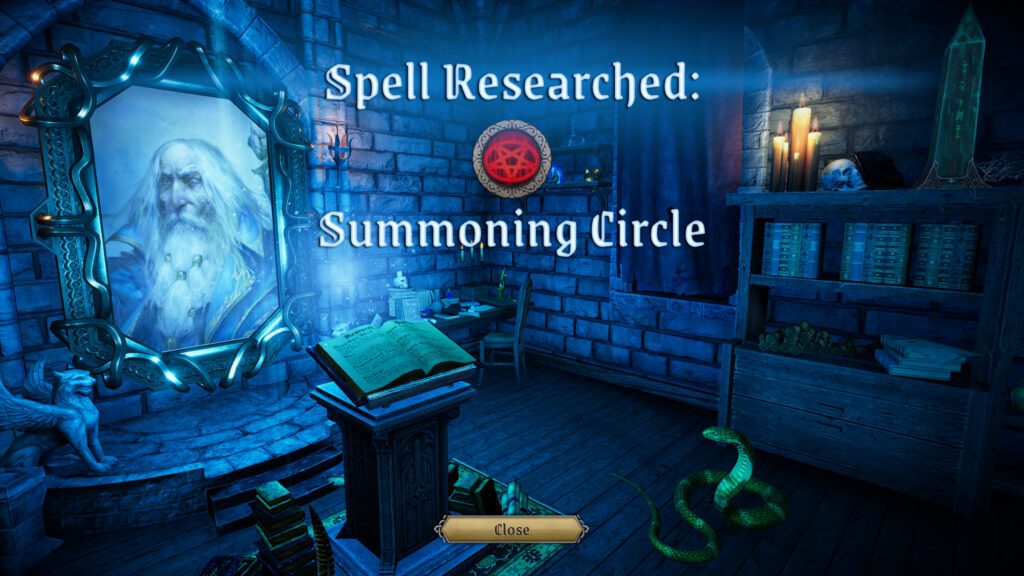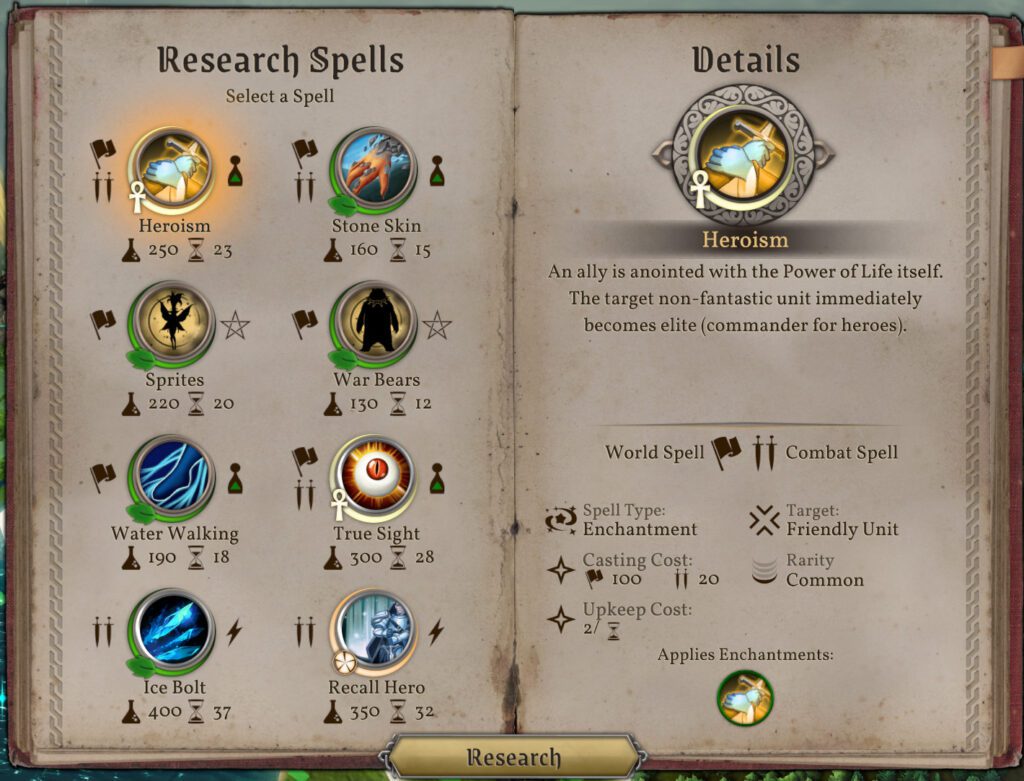Time for a Buff
Master of Magic is a fantasy turn-based, 4x strategy game that came out all the way back in 1994. It was developed by Simtex, the studio that has also brought us the legendary Master of Orion 1 & 2, the OG of 4x strategy genre, and published by MicroProse. It is no wonder that people considered it somewhat of a fantasy spin-off of Master of Orion, coming from the same developer, but Master of Magic Classic managed to carve its own place in the fantasy-themed 4x strategy games, especially due to its variety in gameplay styles, even if not in the terms of narrative. Today, it rightfully belongs to one of the classics of the genre and more memorable turn-based strategy titles from the 90`s.
It was no surprise to see that Slitherine Ltd., who have bought off the rights for the game back in 2013 from Atari, have eventually decided to bring out a “reimagined” version of the game to the players. Developed this time by MuHa Games (Thea: The Awakening) and Eerie Forest Studio, Master of Magic naturally attempts to hold on to what made the classic great. Truth be told, if it manages to succeed in this task completely or not, I cannot say. I barely remember the original, since its been a while, and I’ve been far more into science fiction and Master of Orion series rather than fantasy. You will have to either ask someone else or try the original Master of Magic Classic from GoG, which still works surprisingly well on the systems of today. I, for one, will enjoy the game and judge it on its own merits, with only the vague memories of its predecessor almost thirty years ago.
The Wizard in High Tower
In Master of Magic you choose a wizard to lead your armies in an attempt to conquer the known world, as well as the “other” world, these being called Arcanus and Myrror, respectively. Arcanus resembles Earth, whereas Myrror (harr, harr) is its darker and more mystical version. The choice of your wizard determines a lot about how the game plays, even though the chosen wizard does not appear on the battlefield and instead rules as the “mighty buffer” from his or her tower, pretty much like Saruman. You can choose from 14 wizards, trained in 5 different schools and provide them with various traits to customize them to your liking. Accordingly, there are 14 races you can command, including but not limited to humans, elves, dwarves, trolls, orcs and gnolls, with specific advantages and disadvantages according to their traits. In total, this gives around 200 different unit types for the player to explore and enjoy, so, yeah, there is quite some variety.

Naturally, it had to be Merlin for the first Master of Magic run-through
The goal is simple; starting from your own capital city, you need to explore the map where you will encounter random “groups” or enemy factions, which you need to defeat for the precious loot they have. Once you find a good position with sufficient surrounding resources, you need to expand your empire by building new cities. As you exploit the resources you will be able to upgrade and specialize your settlements, which in term will help you to exterminate the enemy factions. 4X test – check! In my humble opinion, 4x strategies are games like Master of Orion rather than Master of Magic or Stellaris, where one explores an entire galaxy, but since everyone is willing to expand the 4X strategy definition even up to games such as Civ series, I will also go with this.
Management and Research
The empire management is simple and straightforward, but also a delight in terms of presentation and execution. It serves its purpose and it will not scare away new players that may not be as well versed in the genre. You can either make your own settlements at the place of your choosing (but not be able to build too close to your own or settlements belonging to other factions) or conquer existing ones and integrate them into your empire. When you do so and subdue another race, you will get access to their own units as well, which is quite a welcome addition to your power. It is best to specialize each settlement towards a specific purpose, since there are building chains that need to be established before specific units can be recruited. Food will make sure you don’t go over your population cap; if you do, your units will start deserting you. Gold is used to maintain buildings, but you can also buy them during the construction phase if you feel it is taking way too long.
Spell research is an essential part of the game. There are five major categories of magic such as Chaos, Death, Life, Nature and Sorcery, and based on your choice you will be more proficient in some of them while less in others. Naturally, you are expected to align your playstyle with your own strengths, otherwise you will work against you. The system is quite fun and each wizard feels fairly unique, with their spells and buffs making (mostly) a significant impact on the world and armies.


Diplomacy did not exactly impress me. It is barebones, to say the least. Other wizards would either ignore my diplomatic advances, regardless of circumstances, or attack straight away. I may be missing something, but if a trade agreement benefits both parties equally, and we are in a neutral relationship, then the other party should take it, I guess? Sadly, I have started to ignore diplomacy very soon, and I assume a lot of other players will do the same. On the other hand, creating a proper diplomatic system for the games was never an easy task, and a diplomatic victory is not exactly on the menu with MoM, so there is that…
The Wars of Magic
Army management gives you the chance to recruit up to 200 different unit types, gathered from different races and imbued with different powers. The variety here, once again, is simply great. The units can be built in cities or they appear randomly and offer you their services, so you may find actual wizards in your employment other than your own wizard avatar. These can also be fitted out with weapons and armor that will increase their deadliness. All units gain experience over time, so try to keep them alive.



The artwork for units and buildings is superbly done in its fairly unique style
Once the armies engage in the battle, you get into the turn-based mode, with the ability to auto resolve it in the beginning as well as the possibility to speed the entire proceedings. The battlefield is situated on a tactical map divided into hexagons, the trademark of this type of games, and is quite entertaining. Positioning and timing is important, but the crucial part is the strength of a unit. A hero can wipe out an entire army alone, and no amount of maneuvering and tactical prowess can alter the outcome. From that perspective, do not expect an overwhelming depth of a tactical encounter, but the good news is that a proper army composition will triumph over a similarly large army which is inadequate to counter them. Archers can “kite” and decimate slower armies that are lacking cavalry to pursue and close the gap between them. Since the units gain experience over time and during battles, it is important to keep them alive. For this reason it is recommendable to supervise all your encounters in the beginning, as well the more important battles later on. However, you will probably find yourself auto-resolving most of the battles during the game as you create sufficiently powerful army builds.



Tactical map and unit representation work quite well, both from mechanical as well as from graphical point
Graphics in the game fit into the niche perfectly. It is an obvious upgrade to the original, but, as it is the case with many of the games of the genre, it will never awe and mesmerize when compared to any triple AAA title. Sound and music are less memorable, with – dare I say? – slight Harry Potter vibe, but it fits properly into the gameplay. The user interface does its job decent enough and provides a good overview of happenings within your empire, even though notifications for some important events are missing or can be easy to oversee.
Conclusion
The Remake of Master of Magic is a worthy sequel to the original, and a very solid and entertaining game. Of course, when rated, it can only be reviewed within its own category – a remake of a 90’s turn-based strategy, built on an “ancient” platform with specific limitations. This has both positive and negative aspects, but along the lines of not having to reinvent the wheel once again, the developers stuck with what the original game composition. If you view the game entirely through the aspect of today’s standard, you may be disappointed.
One of the negative comments frequently levied at the game is that a lot of “little things” have been left out, such as various animations and gameplay details. Once again, I cannot say much about that, and I am judging the game by its own merits, with only a faint recollection of the original. For that reason, the review will do little good to the old Master of Magic Classic aficionados, since they know the game in and out, but if you are someone like me, with little recollection or no experience whatsoever, you will not know what you are missing out when compared to the old title.
Finally, it is worth noting that Master of magic Remake was made for the fans of the original game, catering to a specific niche, but it can and will provide a lot of entertainment for people who have never played the original.
